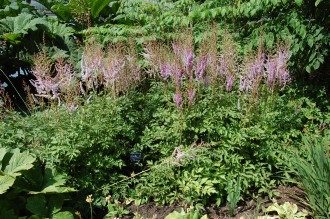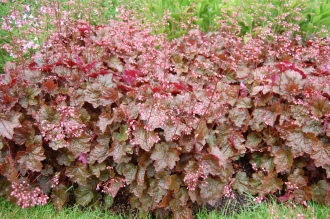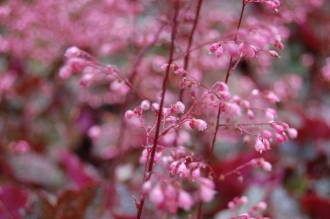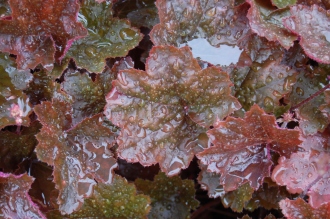Position: Full sun to partial shade
Flowering period: Summer
Soil: Moist, well drained
Eventual Height: 90cm
Eventual Spread: 50cm
Hardiness: 4b, 5a, 5b, 6a, 6b,7 a, 7b, 8a, 8b, 9a
Family: Saxifragaceae
Heuchera cylindrica ‘Greenfinch’ is a semi-evergreen herbaceous perennial with a low growing, clump forming habit. Its mid green leaves are rounded with up to 7 shallow lobes and dentate margins, up to 7cm long and 8cm across. Its yellow/ green flowers are bell shaped and arranged in dense terminal clusters. Its fruit is a small capsule.
The species Heuchera cylindrica, commonly known as Roundleaf Alumroot or Coral Flower, is native to the west of the United States. In its native habitat it grows on rocky slopes, grassland and open forests.
The etymological root of the binomial name Heuchera was named for Johann Heinrich von Heucher, the 18th century professor of medicine and botanist at Wittenberg, Germany. Cylindrica is from the Latin meaning ‘cylindrical, in reference to the the shape of the inflorescence.
The landscape architect may find Heuchera cylindrica ‘Greenfinch’ useful as a low growing ground cover plant, particularly in dappled shade locations. Once established this plant is drought tolerant.
Ecologically, Heuchera cylindrica ‘Greenfinch’ flowers are attractive to pollinating insects.
Heuchera cylindrica ‘Greenfinch’ prefers moist, fertile, well-drained soils. It prefers a neutral pH of soil. This plant will not tolerate water-logging.
Heuchera cylindrica ‘Greenfinch’ requires little maintenance. Large clumps may be divided in autumn.
![]()
Landscape Architecture












